Precision Temperature Control System with Low EMI for Applications in Analyzing Thermal Properties of Highly Sensitive Piezoelectric Sensors
Abstract
1. Introduction
2. Materials and Methods
2.1. Mechanical Setup

2.2. Electronics
2.3. System Calibration and Adjustment
2.4. Measurement Setup
2.5. Pulse Width Modulation Driving Method
2.6. Bipolar Constant Current Source
3. Results
3.1. EMI
3.2. Long-Term Stability
4. Conclusions
Author Contributions
Funding
Institutional Review Board Statement
Informed Consent Statement
Data Availability Statement
Conflicts of Interest
References
- Song, C.; Ma, Z.; Li, C.; Zhang, H.; Zhu, Z.; Wang, J. Application of Heat-Enhancement for Improving the Sensitivity of Quartz Crystal Microbalance. Biosensors 2022, 12, 643. [Google Scholar] [CrossRef] [PubMed]
- Lee, H.-J.; Park, D.-J. Analysis of Thermal Characteristics of MEMS Sensors for Measuring the Rolling Period of Maritime Autonomous Surface Ships. J. Mar. Sci. Eng. 2022, 10, 859. [Google Scholar] [CrossRef]
- Hetnarski, R.B.; Eslami, M.R. Basic Laws of Thermoelasticity. In Thermal Stresses—Advanced Theory and Applications; Solid Mechanics and Its Applications; Springer: Cham, Switzerland, 2019; Volume 158, pp. 1–43. [Google Scholar]
- Forinová, M.; Pilipenco, A.; Víšová, I.; Kunčák, J.; Lynn, S.N.; Yudin, P.; Dostálek, J.; Hönig, V.; Palus, M.; Mašková, H.; et al. Biosensor for rapid detection of SARS-CoV-2 in real-world samples. In Proceedings of the 2021 IEEE Sensors, Sydney, Australia, 31 October–3 November 2021; pp. 1–4. [Google Scholar] [CrossRef]
- Fort, A.; Landi, E.; Grasso, A.L.; Mugnaini, M.; Panzardi, E.; Vignoli, V.; Mahdizadeh, F.F.; Magnani, A. Monitoring of the Viscoelastic Behaviour of Bacterial Biofilms Exploiting an Accurate QCM System. In Proceedings of the 2022 IEEE International Symposium on Medical Measurements and Applications (MeMeA), Messina, Italy, 22–24 June 2022; pp. 1–6. [Google Scholar] [CrossRef]
- Wachiralurpan, S.; Phung-On, I.; Chanlek, N.; Areekit, S.; Chansiri, K.; Lieberzeit, P.A. In-Situ Monitoring of Real-Time Loop-Mediated Isothermal Amplification with QCM: Detecting Listeria monocytogenes. Biosensors 2021, 11, 308. [Google Scholar] [CrossRef] [PubMed]
- Akgönüllü, S.; Özgür, E.; Denizli, A. Quartz Crystal Microbalance-Based Aptasensors for Medical Diagnosis. Micromachines 2022, 13, 1441. [Google Scholar] [CrossRef]
- Zampetti, E.; Papa, P.; Bearzotti, A.; Macagnano, A. Pocket Mercury-Vapour Detection System Employing a Preconcentrator Based on Au-TiO2 Nanomaterials. Sensors 2021, 21, 8255. [Google Scholar] [CrossRef]
- Jang, I.R.; Jung, S.I.; Lee, G.; Park, I.; Kim, S.B.; Kim, H.J. Quartz crystal microbalance with thermally-controlled surface adhesion for an efficient fine dust collection and sensing. J. Hazard. Mater. 2022, 424, 127560. [Google Scholar] [CrossRef]
- Zampetti, E.; Macagnano, A.; Papa, P.; Bearzotti, A.; Petracchini, F.; Paciucci, L.; Pirrone, N. Exploitation of an integrated microheater on QCM sensor in Particulate Matter Measurements. Sens. Actuators A Phys. 2017, 264, 205–211. [Google Scholar] [CrossRef]
- Costas, J.; Rodríguez-Pardo, L.; Cao-Paz, A.; Fariña, J.; Perrot, H.; Rose, D. QCM Sensor System Based on a Phase Detector Circuit for Measurements of Density and Viscosity of Liquids. In Proceedings of the 2021 Joint Conference of the European Frequency and Time Forum and IEEE International Frequency Control Symposium (EFTF/IFCS), Gainesville, FL, USA, 7–17 July 2021; pp. 1–3. [Google Scholar] [CrossRef]
- Miranda-Martínez, A.; Rivera-González, M.X.; Zeinoun, M.; Carvajal-Ahumada, L.A.; Serrano-Olmedo, J.J. Viscosity Meaurement Sensor: A Prototype for a Novel Medical Diagnostic Method Based on Quartz Crystal Resonator. Sensors 2021, 21, 2743. [Google Scholar] [CrossRef]
- Cao-Paz, A.; Rodriguez-Pardo, L.; Fariña, J. Temperature compensation of QCM sensors in Liquid Media. Sens. Actuators B Chem. 2014, 193, 78–81. [Google Scholar] [CrossRef]
- Dirri, F.; Palomba, E.; Longobardo, A.; Zampetti, E.; Saggin, B.; Scaccabarozzi, D. A review of Quartz Crystal microbalances for space applications. Sens. Actuators A Phys. 2019, 287, 48–75. [Google Scholar] [CrossRef]
- Nishiyama, K.; Kuninaka, H. Development and Flight Experiment of a Space QCM in Small Demonstration Satellite-4. Trans. Jpn. Soc. Aeronaut. Space Sci. Aerosp. Technol. Jpn. 2014, 12, 19–25. [Google Scholar] [CrossRef]
- Tsuchiya, Y.; Kukita, H.; Shiobara, T.; Yukumatsu, K.; Miyazaki, E. Twin-CQCM and Twin-TQCM Sensors With Wide Operating Temperature Range for Outgassing and Atomic Oxygen Measurement. IEEE Sens. J. 2021, 21, 10530–10538. [Google Scholar] [CrossRef]
- Tsuchiya, Y.; Kukita, H.; Shiobara, T.; Yukumatsu, K.; Miyazaki, E. Temperature controllable QCM sensor with accurate temperature measurement for outgas and contamination assessment. In Proceedings of the 2019 IEEE SENSORS, Montreal, QC, Canada, 27–30 October 2019; pp. 1–4. [Google Scholar] [CrossRef]
- Magani, M.; Saggin, B.; Scaccabarozzi, D.; Tarabini, M.; Palomba, E.; Longobardo, A.; Dirri, F.; Zampetti, E. Temperature Sensitivity of a Quartz Crystal Microbalance for TGA in Space. In Proceedings of the 5th IEEE International Workshop on Metrology for AeroSpace (MetroAeroSpace), Rome, Italy, 20–22 June 2018; pp. 629–633. [Google Scholar] [CrossRef]
- Johannsmann, D. Introduction. In The Quartz Crystal Microbalance in Soft Matter Research; Soft and Biological Matter; Springer: Cham, Switzerland, 2015; pp. 1–22. [Google Scholar]
- Sauerbrey, G. Verwendung von Schwingquarzen zur Wägung dünner Schichten und zur Mikrowägung. Z. Physik. 1959, 155, 206–222. [Google Scholar] [CrossRef]
- Kanazawa, K.K.; Gordon, J.G. The oscillation frequency of a quartz resonator in contact with liquid. Anal. Chim. Acta 1985, 175, 99–105. [Google Scholar] [CrossRef]
- Huellemeier, H.A.; Eren, N.M.; Ortega-Anaya, J.; Jimenez-Flores, R.; Heldman, D.R. Application of quartz crystal microbalance with dissipation (QCM-D) to study low-temperature adsorption and fouling of milk fractions on stainless steel. Chem. Eng. Sci. 2022, 247, 117004. [Google Scholar] [CrossRef]
- Braidotti, N.; do R. B. F. Lima, M.A.; Zanetti, M.; Rubert, A.; Ciubotaru, C.; Lazzarino, M.; Sbaizero, O.; Cojoc, D. The Role of Cytoskeleton Revealed by Quartz Crystal Microbalance and Digital Holographic Microscopy. Int. J. Mol. Sci. 2022, 23, 4108. [Google Scholar] [CrossRef] [PubMed]
- Bechmann, R. Frequency-Temperature-Angle Characteristics of AT-Type Resonators Made of Natural and Synthetic Quartz. Proc. IRE 1956, 44, 1600–1607. [Google Scholar] [CrossRef]
- Falconi, C.; Zampetti, E.; Pantalei, S.; Martinelli, E.; di Natale, C.; D’Amico, A.; Stornelli, V.; Ferri, G. Temperature and flow velocity control for Quartz Crystal microbalances. In Proceedings of the 2006 IEEE International Symposium on Circuits and Systems, Kos, Greece, 21–24 May 2006; pp. 4399–4402. [Google Scholar] [CrossRef]
- Barragan, L.A.; Navarro, D.; Acero, J.Ú.; Urriza, I.; Burdio, J.É.M. FPGA implementation of a switching frequency modulation circuit for EMI reduction in resonant inverters for induction heating appliances. IEEE Trans. Ind. Electron. 2008, 55, 11–20. [Google Scholar] [CrossRef]
- Ala, G.; Giaconia, G.C.; Giglia, G.; Di Piazza, M.C.; Vitale, G. Design and performance evaluation of a high power-density EMI filter for PWM inverter-fed induction-motor drives. IEEE Trans. Ind. Appl. 2016, 52, 2397–2404. [Google Scholar] [CrossRef]
- Skibinski, G.L.; Kerkman, R.J.; Schlegel, D. EMI emissions of modern PWM AC drives. IEEE Ind. Appl. Mag. 1999, 5, 47–80. [Google Scholar] [CrossRef]
- Visioli, A. Basics of PID Control. In Practical PID Control. Advances in Industrial Control; Springer: London, UK, 2006; pp. 1–18. [Google Scholar]
- Matthys, R.J. Crystal Oscillator Circuits Revisited Edition; Krieger Publishing Company: Malabar, FL, USA, 1992; pp. 44–45. [Google Scholar]
- Emon, I.; Narayansamy, B.; Peng, H.; Mustafeez-ul-Hassan; Yuan, Z.; Luo, F. Investigation of Power Converter’s Near Field EMI Containment Using Passive Filters. In Proceedings of the 2020 IEEE International Symposium on Electromagnetic Compatibility & Signal/Power Integrity (EMCSI), Reno, NV, USA, 28 July–28 August 2020; pp. 398–403. [Google Scholar] [CrossRef]
- Xia, X.; Xiao, Q. Electromagnetic Interference Shielding of 2D Transition Metal Carbide (MXene)/Metal Ion Composites. Nanomaterials 2021, 11, 2929. [Google Scholar] [CrossRef] [PubMed]
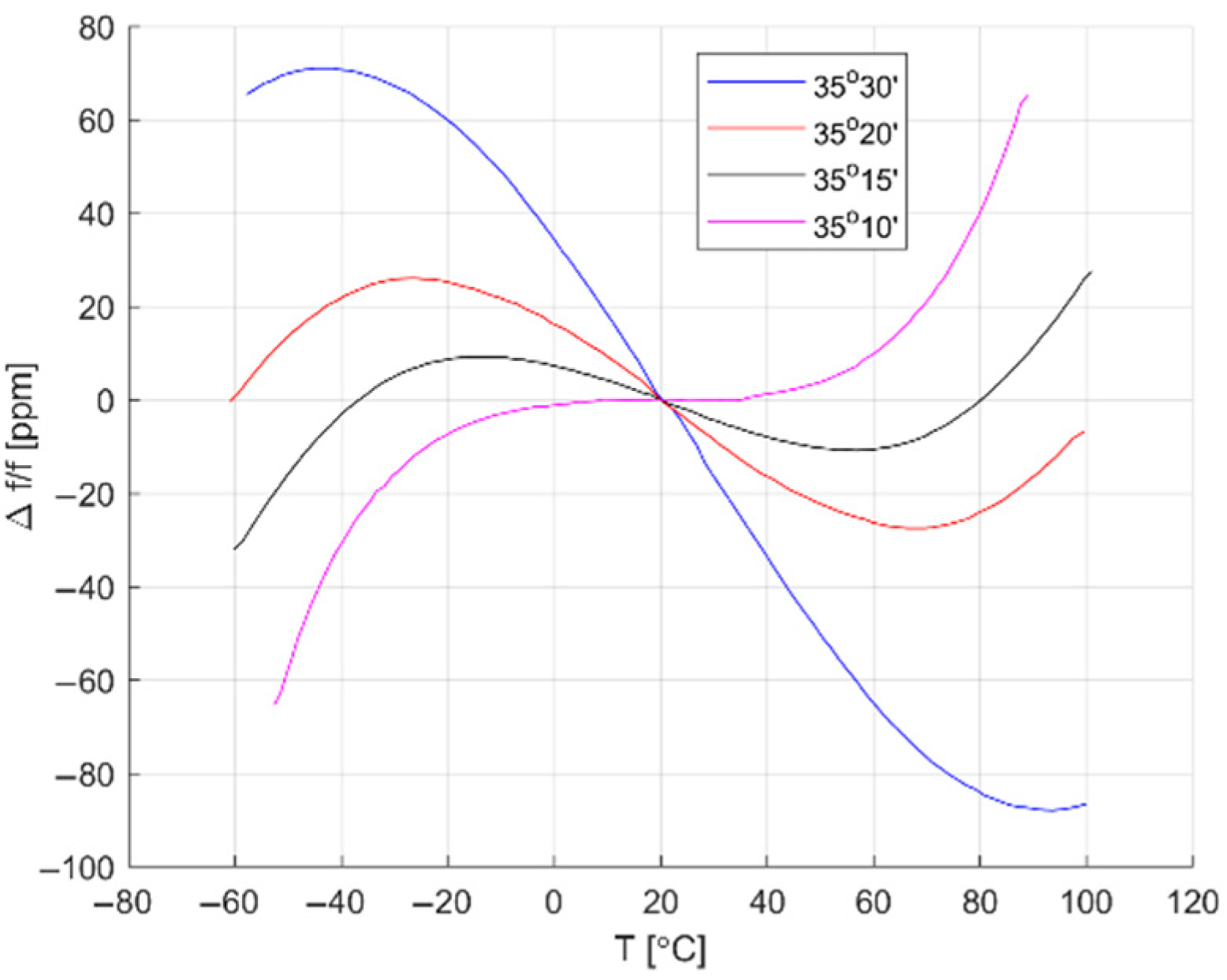
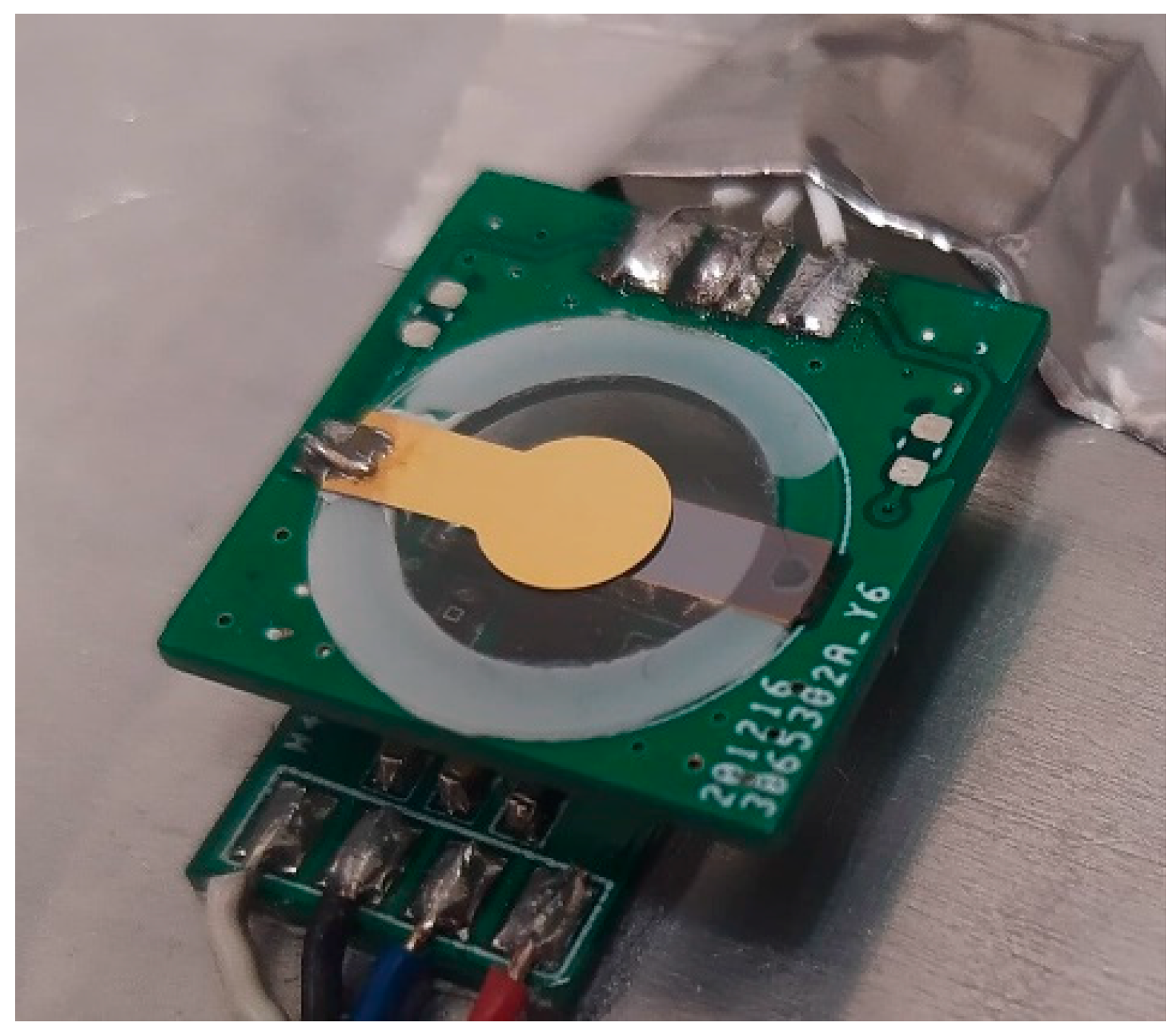
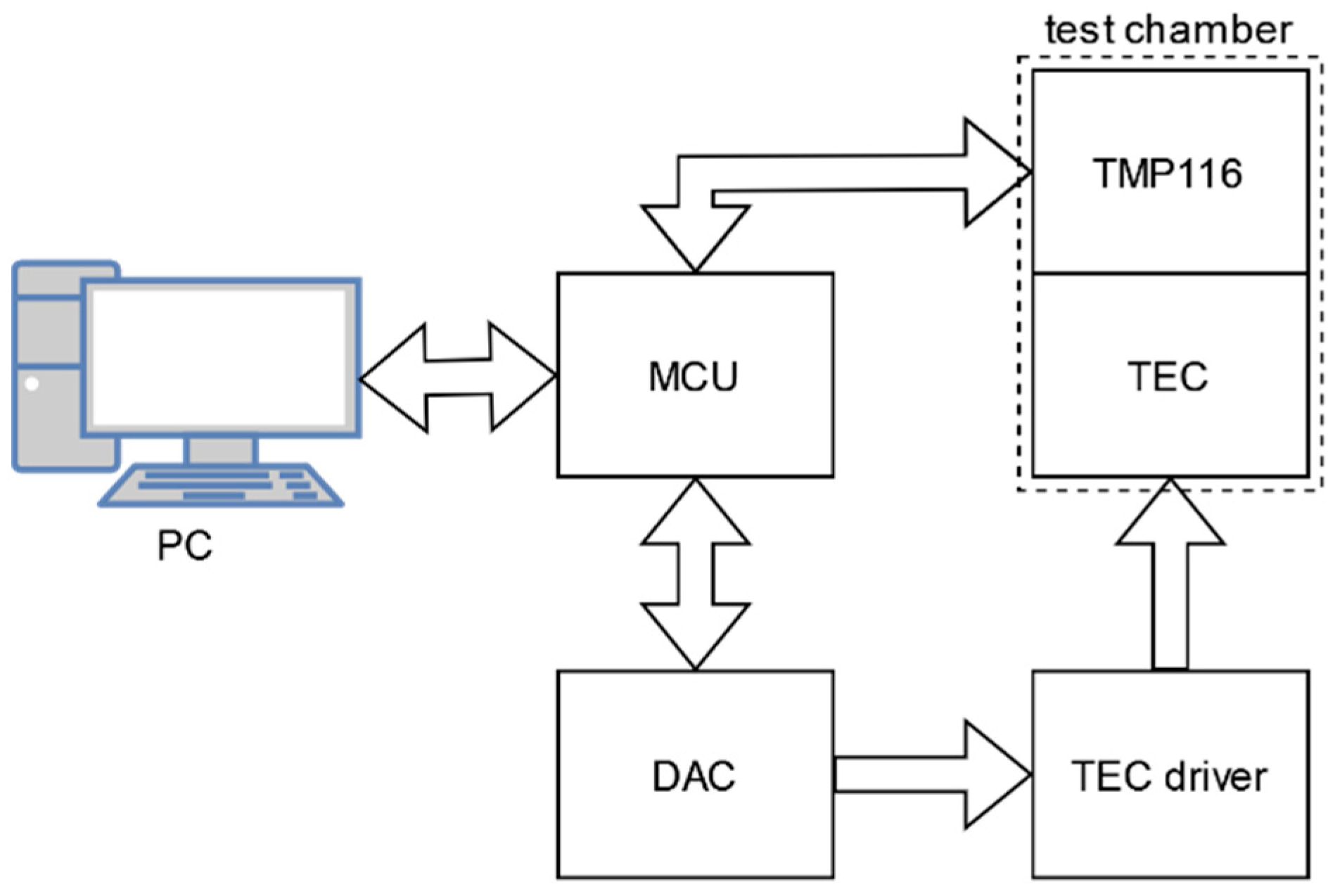
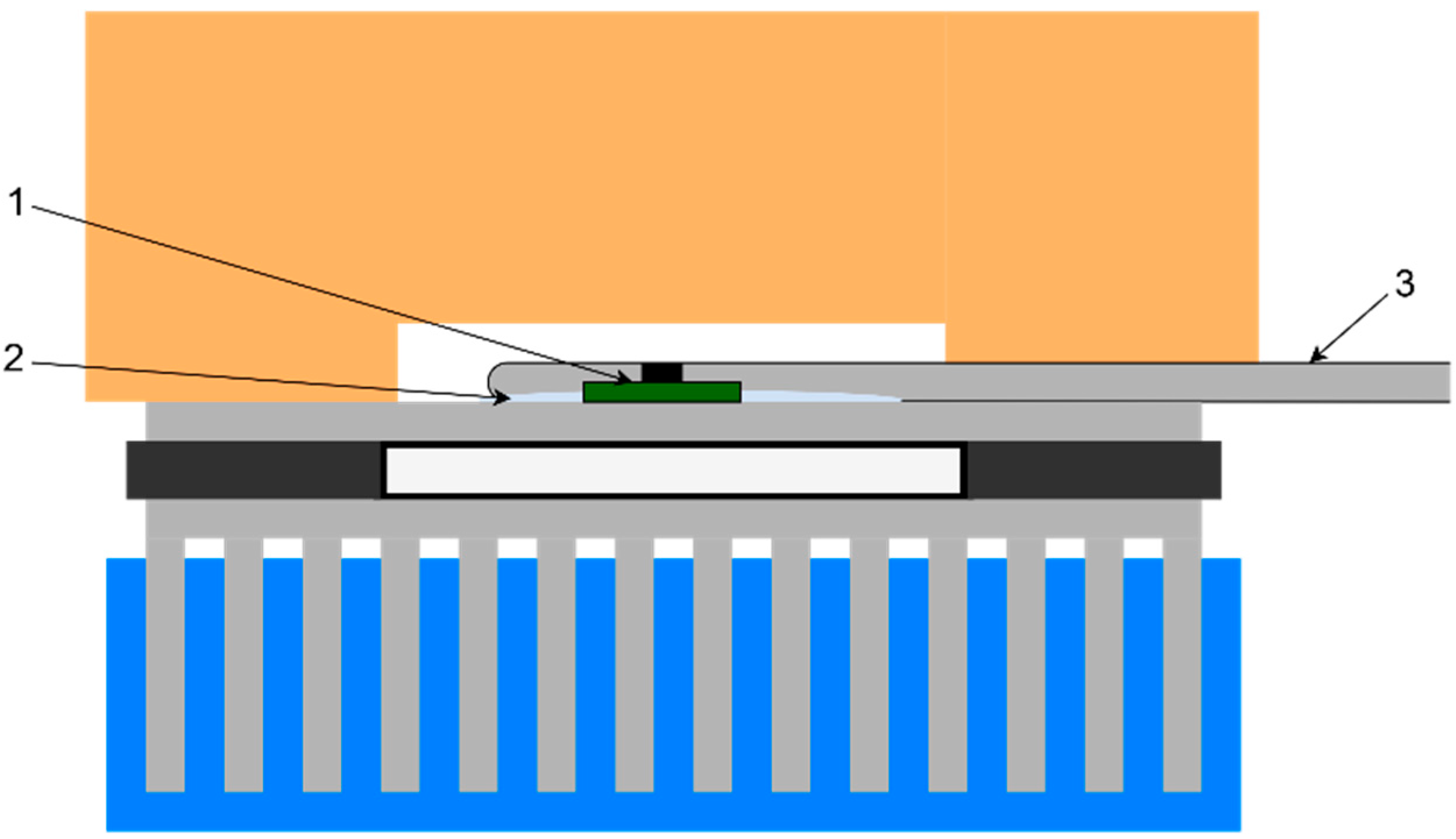
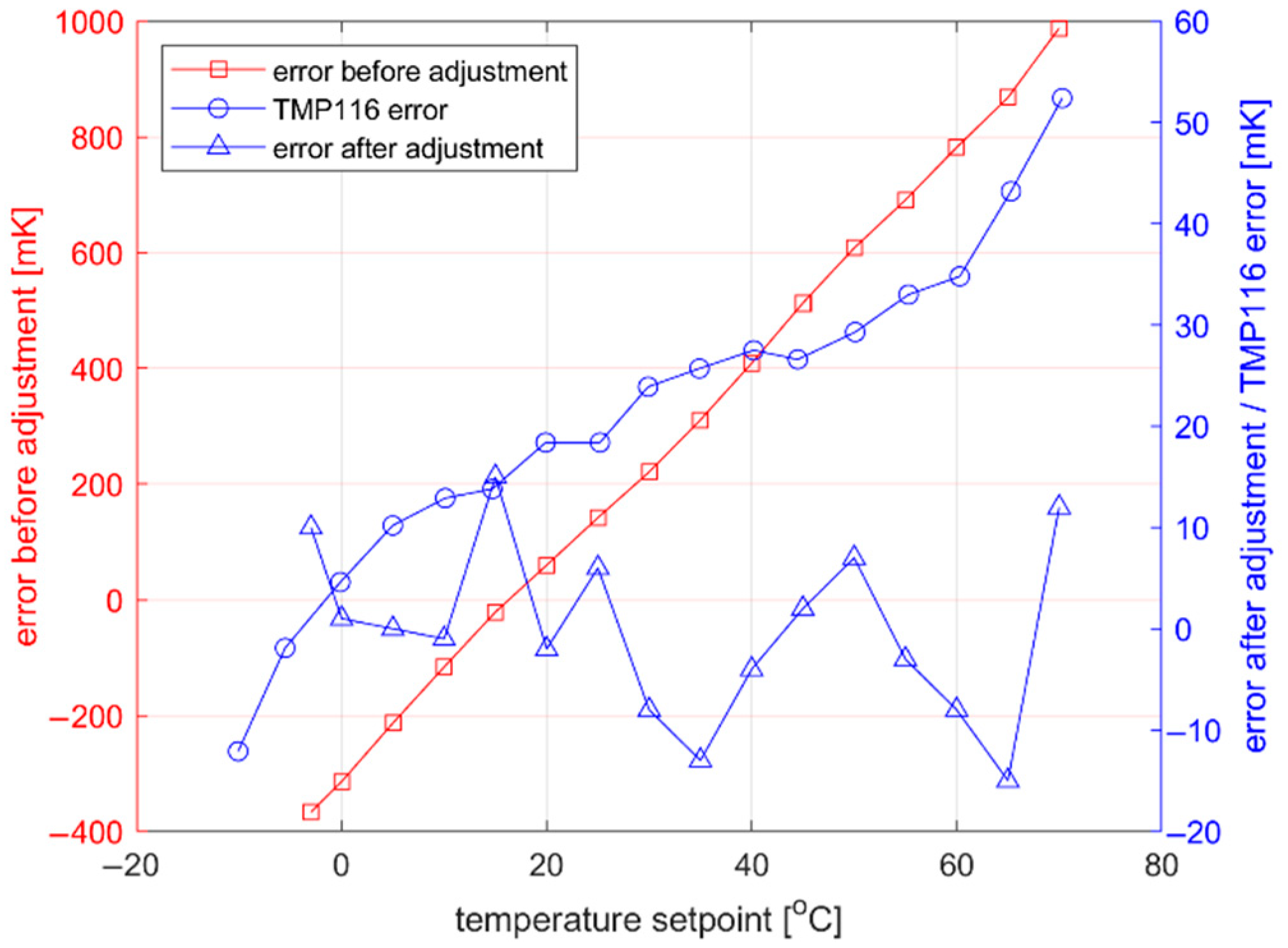

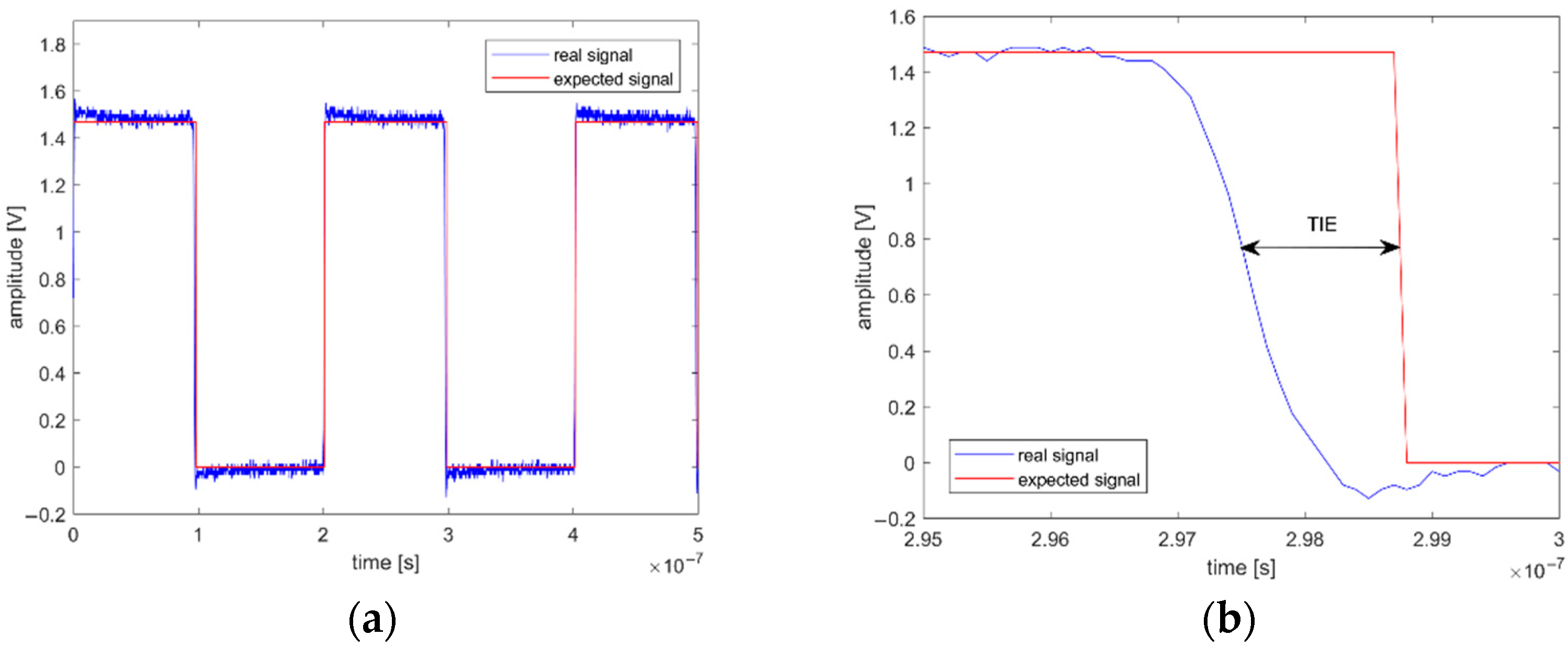
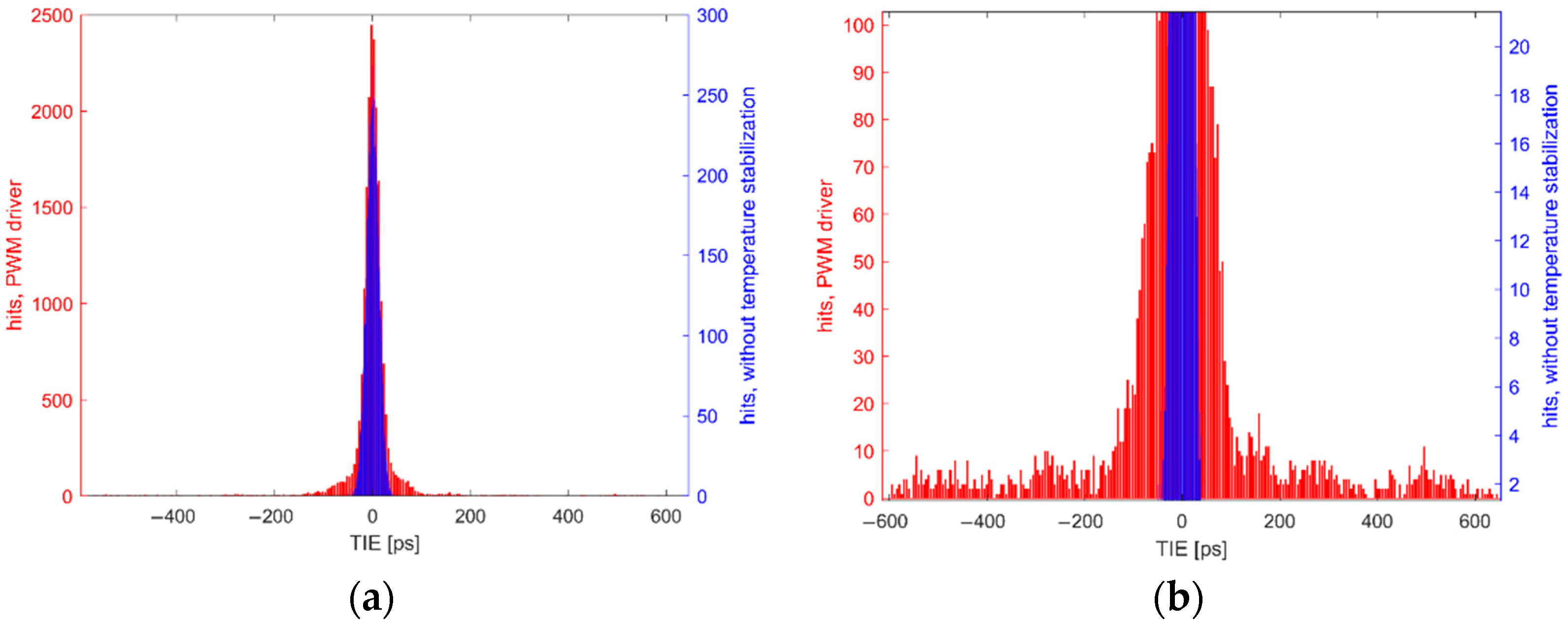


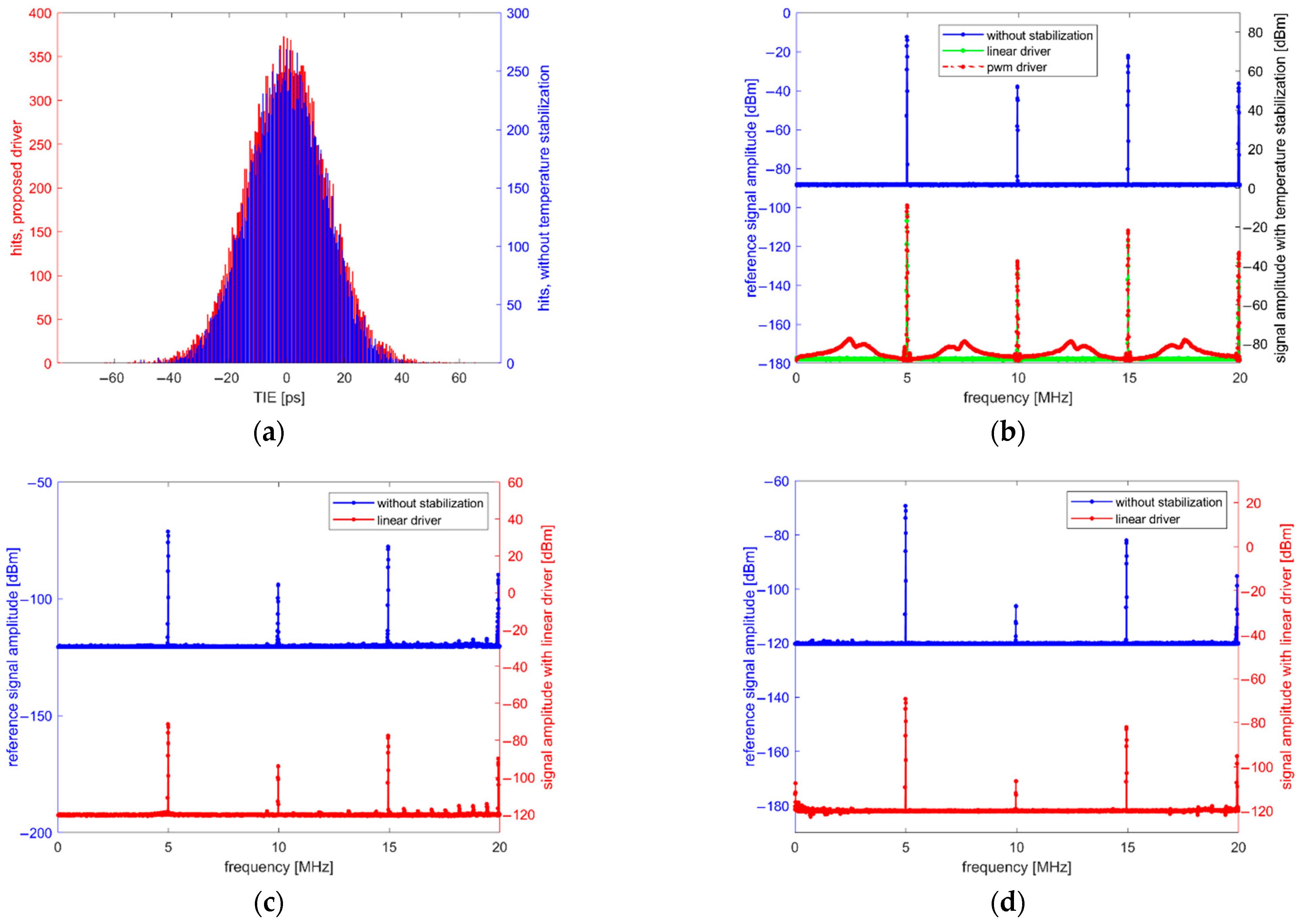
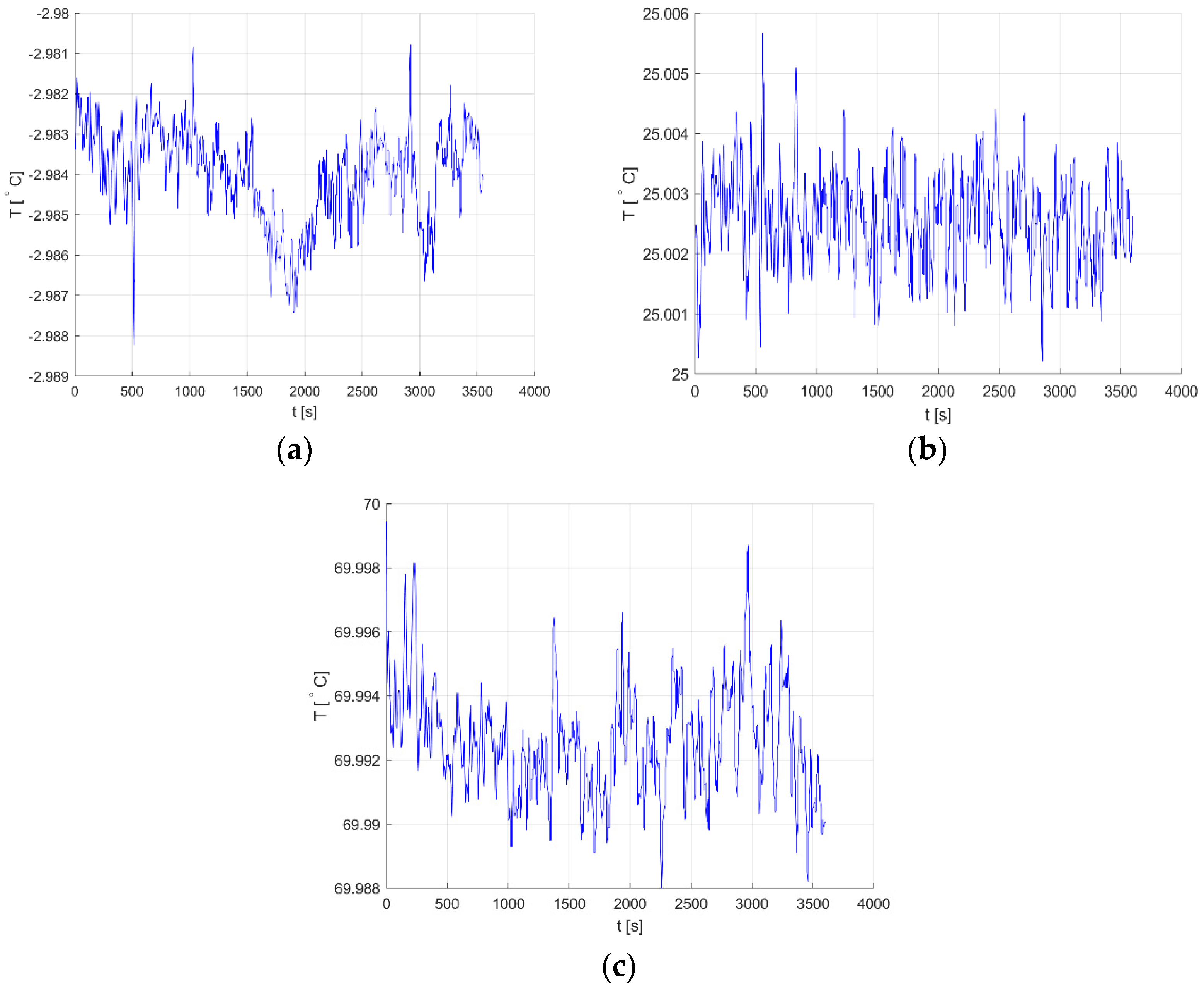
Publisher’s Note: MDPI stays neutral with regard to jurisdictional claims in published maps and institutional affiliations. |
© 2022 by the authors. Licensee MDPI, Basel, Switzerland. This article is an open access article distributed under the terms and conditions of the Creative Commons Attribution (CC BY) license (https://creativecommons.org/licenses/by/4.0/).
Share and Cite
Nowocień, S.; Wielgus, R.S.; Mroczka, J. Precision Temperature Control System with Low EMI for Applications in Analyzing Thermal Properties of Highly Sensitive Piezoelectric Sensors. Sensors 2022, 22, 8525. https://doi.org/10.3390/s22218525
Nowocień S, Wielgus RS, Mroczka J. Precision Temperature Control System with Low EMI for Applications in Analyzing Thermal Properties of Highly Sensitive Piezoelectric Sensors. Sensors. 2022; 22(21):8525. https://doi.org/10.3390/s22218525
Chicago/Turabian StyleNowocień, Sylwester, Radosław Sławomir Wielgus, and Janusz Mroczka. 2022. "Precision Temperature Control System with Low EMI for Applications in Analyzing Thermal Properties of Highly Sensitive Piezoelectric Sensors" Sensors 22, no. 21: 8525. https://doi.org/10.3390/s22218525
APA StyleNowocień, S., Wielgus, R. S., & Mroczka, J. (2022). Precision Temperature Control System with Low EMI for Applications in Analyzing Thermal Properties of Highly Sensitive Piezoelectric Sensors. Sensors, 22(21), 8525. https://doi.org/10.3390/s22218525





